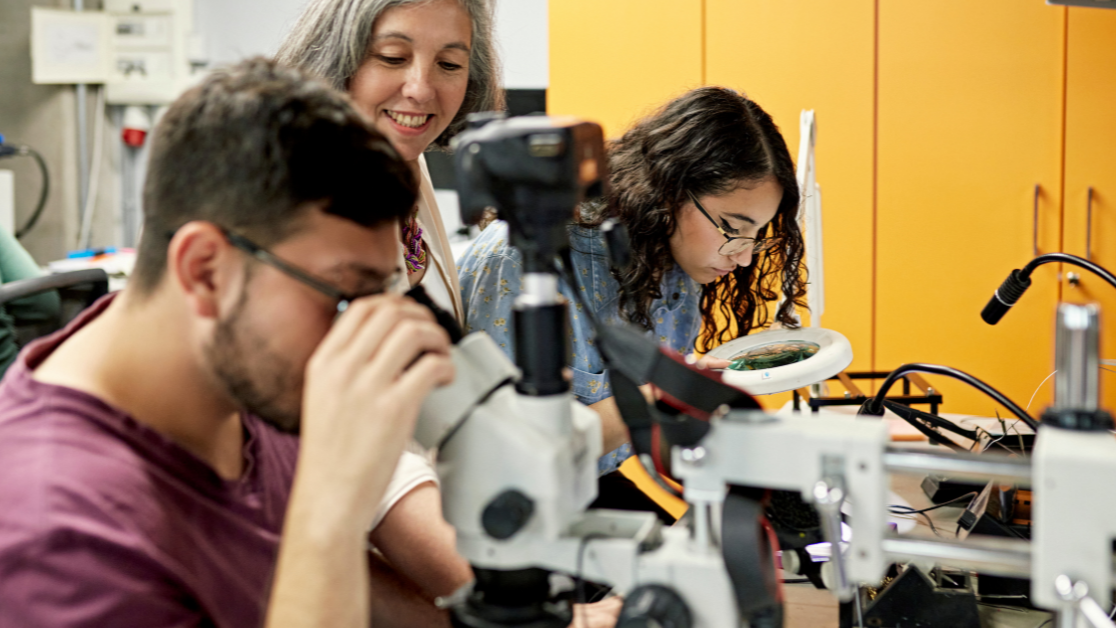The skillset a person possesses is their ticket to a good job and a life-sustaining wage. While this has always been true, it’s more important than ever that people leave school not just with a head full of knowledge, but with in-demand, hands-on skills, and a mindset of lifelong learning that will form the basis of their employability toolkit.
At this year’s ASU+GSV, an impressive panel convened to discuss the skills required for today’s – and indeed tomorrow’s – jobs: Stephanie Short of America Succeeds; Dylan Gambardella of Next Gen HQ; Susan Rivers of iThrive Games; Courtney Reilly of Skillsline; Zarek Drozda of Data Science 4 Everyone; and Linda Jingfang Cai of LinkedIn. As Linda explained, nearly half of recruiters are now actively using skills data to fill roles. And, fueling a heightened demand for skills-building sites and programs, more and more young people are actively looking to build their skills and advertise them on their resumes. They’re doing this by way of bootcamps, apprenticeships, internships, badging and other micro credentialing programs, and beyond. But what exactly are they hoping to build, and what are employers really looking for?
First and foremost, the focus is on durable skills. These are the skills that can transcend any one job and be immediately appealing in any work setting: critical thinking, collaboration, communication, and so on. Everyone absolutely needs those as a baseline, but they alone aren’t meaty enough to land someone a good job today. Irrespective of sector, most of today’s employers are also demanding a technologically savvy and data-minded skillset. As Zarek explained, everyone now needs skills like spreadsheet fluency, or data visualization fluency.
So, what does this mean for people coming out of school who haven’t learned data science, for example? It means they often have a lot of catching up to do, because the schools of today aren’t necessarily built for the jobs of today, let alone the jobs of tomorrow. In short, kids do still need to learn geometry, but, Zarek shared, “What’s critical as we go forward is the dosage and ratios and time allocation we give to these subjects.” He, and many others, advocate for a refresh of curriculum to be more geared to 21st century norms and priorities. Furthermore, there’s a need to ensure that kids can build these schools outside the walls of their classrooms.
How, though, can educators and skills-based content providers make skills-oriented subject matter appealing to young people, and in particular, to the Gen Z crowd? The panelists agreed that removing barriers to access is a big part of the challenge. This often means meeting kids with educational content in spaces they already frequent. When kids are spending endless time on TikTok, asking them to unplug and disengage from their digital life is less appealing than showing up in those spaces with highly engaging career and skills-oriented content.
However, equally important is ensuring that young people understand the connections between the skills they’re being asked to build, and real life. It’s about showing them that the stakes are, in fact, quite high, but that things like play and gaming –which are typically taboo in the classroom setting – can in fact help them build in-demand skills. Susan explained this perfectly. “I’ve seen kids and teenagers out in the world practicing so many of the skills that we’re calling durable skills while they’re playing games, especially when they’re playing games with others. People need to practice through play. They can sharpen their social emotional skills in settings that are stressful, or where there’s a crisis and where they need to work together – so they’re practicing when it feels like it matters.”
Dylan shared that Next Gen HQ adopts a failsafe approach to engaging young people. “Our bet is that if we can get more time to build a learning habit that will lead to young people actually building these real skills, it will eventually result in the outcomes that we’re all chasing. But it starts and ends with somebody opening an app. Are they coming to the class? Are they actually engaging? There are only two ways to do that. You make it fun, and make it desirable, or you tell somebody they have to. And currently our setup, let’s say from the institutional perspective, doesn’t [make it fun].”
Implicit in everything discussed in this panel is a set of underlying paradigm changes. Firstly, we need to shift our thinking about what it means to teach and be taught, as well as to employ and be employed. Furthermore, we need to do away with the notion that graduation from school and entrance into higher education –or getting a degree – are standalone goals. Rather, they are milestones in a longer journey of learning and growth that can happen both inside and outside of school. Finally, it involves accepting that learning must never stop and that skills are the golden building blocks with which young people can pave their unique pathways to a successful career and a fulfilled life.
Watch the whole panel conversation here.





